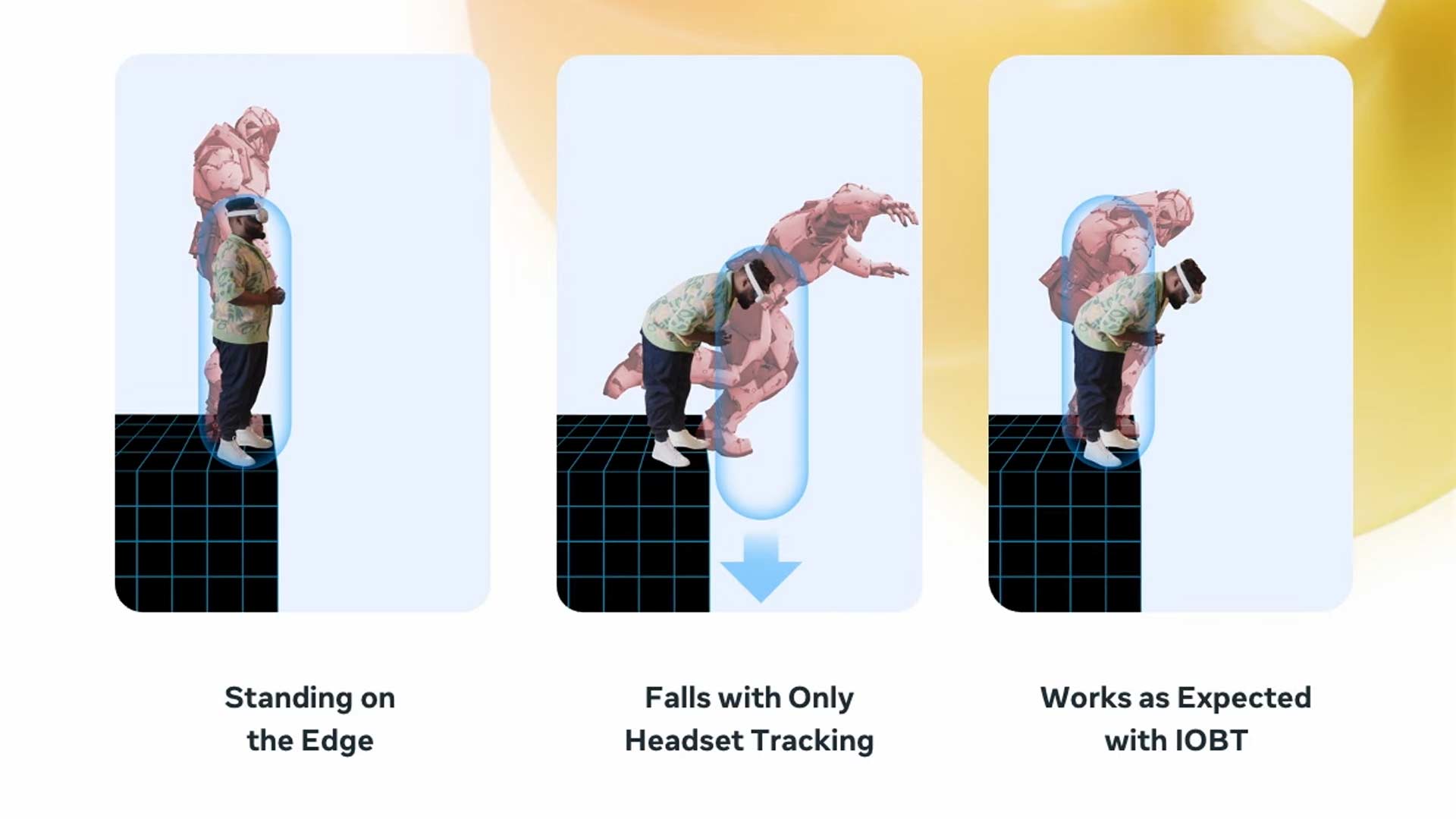Meta announced that it’s offering new developer tools for Quest headsets to make avatars more realistic. The company also unveiled a Quest 3-exclusive upper body tracking feature that supports a much wider range of body motion.
Announced at Connect 2023 late last week, Meta showed off some new features coming both to Quest 3 and the rest of the Quest platform.
On Quest 3, Meta says it will be able to use inside-out sensor data to optically track wrists, elbows, shoulders, and torso—or something the company is calling ‘Inside Out Body Tracking’ (IOBT). The Quest 3-exclusive feature also tracks where your legs are relative to your torso, making avatars capable of bending forward and peering over a cliff.

By using this upper body data to extrapolate lower body actions, the company says it can make avatars replicate more natural movements than traditional inverse kinematics (IK)-based methods.
The company also announced a feature called ‘Generative Legs’, which is headed to Quest 2/3/Pro in December. The developer tool is said to create more realistic leg movement using either three-point body tracking or the Quest 3-exclusive IOBT. It’s capable of recreating more natural standing and sitting poses, a more lifelike gait when walking, and also supports jumping, ducking and squatting.
Since it’s essentially guessing where your legs might naturally be in any given situation, Generative Legs won’t account for individual leg movement like a dedicated tracker might, such as a SteamVR tracking puck or Sony’s Mocapi motion capture device—that means your avatar can’t do karate or breakdance.
Still, it’s pretty impressive how much better the whole system is in comparison to standard IK. Granted, Quest users won’t be able to pull of the fancy footwork CEO Mark Zuckerberg did on the virtual stage at Connect 2022 last year, but it’s starting to look pretty close.
Check out Meta’s Generative Legs and the new Quest 3 upper body tracking feature in action in a Meta-built showcase app called Dodge Arcade:
Quelle:



